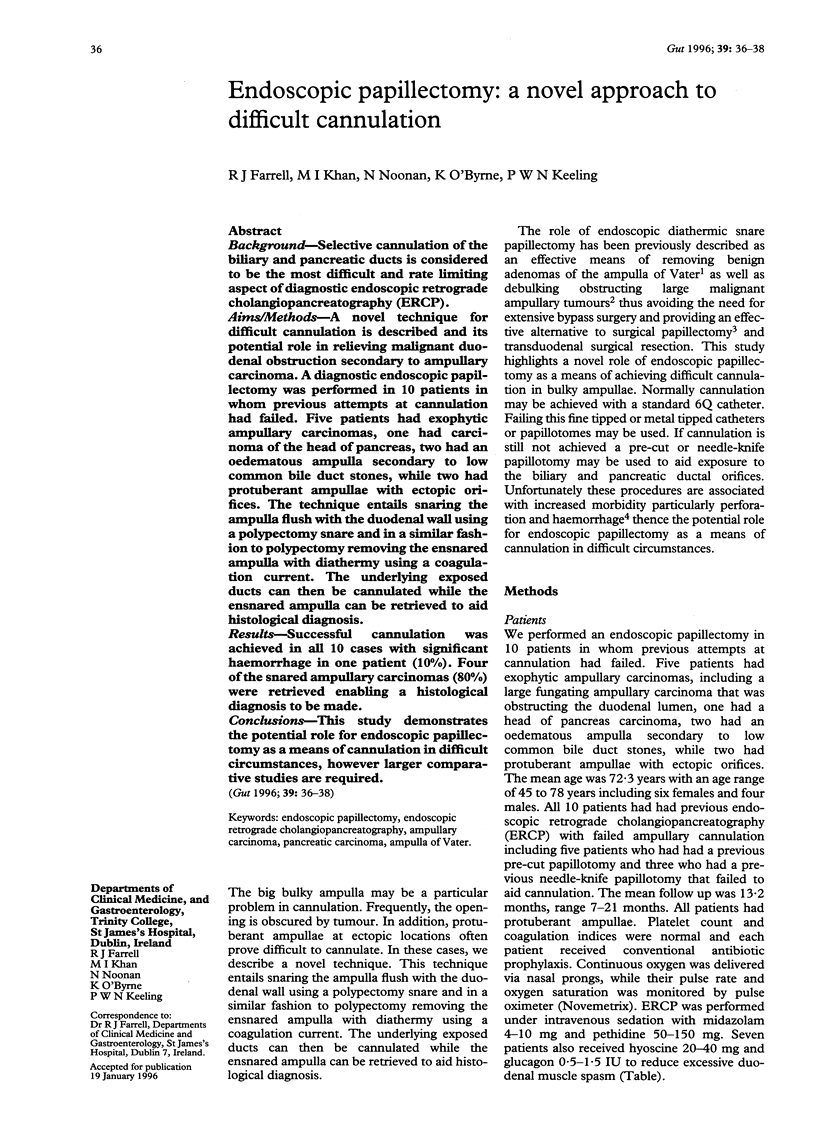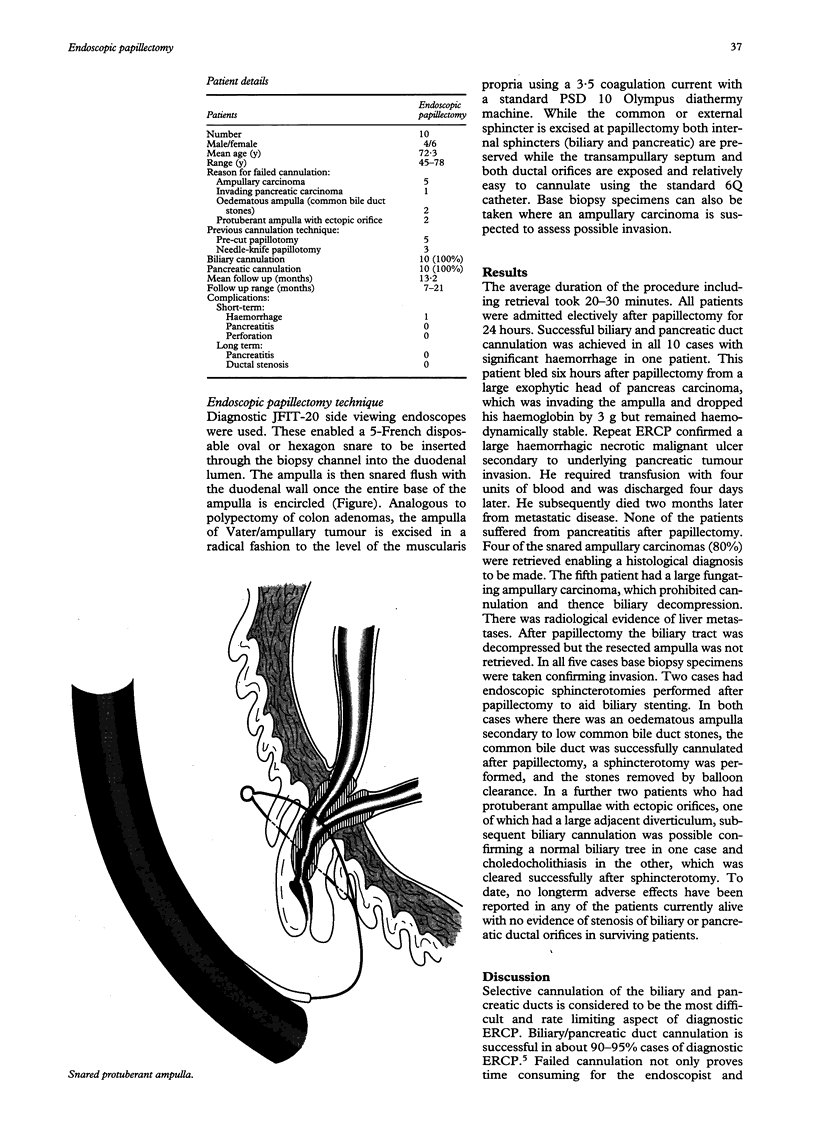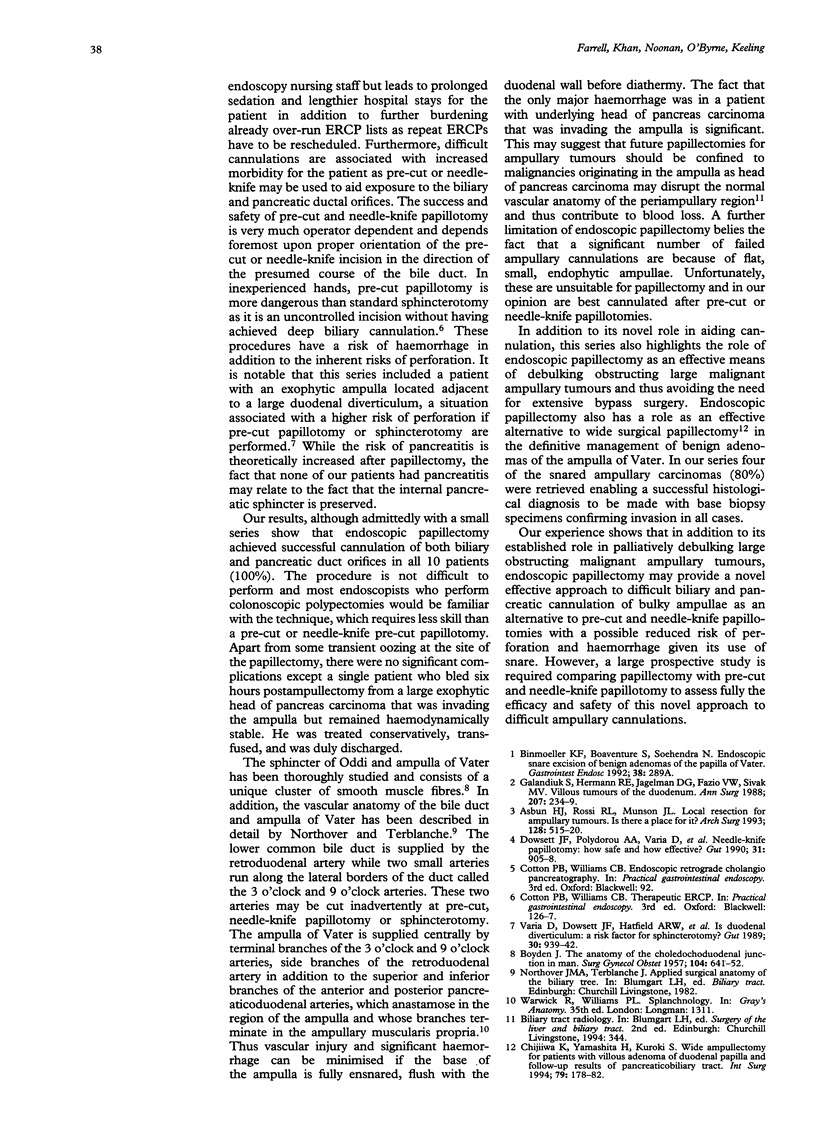Abstract
BACKGROUND: Selective cannulation of the biliary and pancreatic ducts is considered to be the most difficult and rate limiting aspect of diagnostic endoscopic retrograde cholangiopancreatography (ERCP). AIMS/METHODS: A novel technique for difficult cannulation is described and its potential role in relieving malignant duodenal obstruction secondary to ampullary carcinoma. A diagnostic endoscopic papillectomy was performed in 10 patients in whom previous attempts at cannulation had failed. Five patients had exophytic ampullary carcinomas, one had carcinoma of the head of pancreas, two had an oedematous ampulla secondary to low common bile duct stones, while two had protuberant ampullae with ectopic orifices. The technique entails snaring the ampulla flush with the duodenal wall using a polypectomy snare and in a similar fashion to polypectomy removing the ensnared ampulla with diathermy using a coagulation current. The underlying exposed ducts can then be cannulated while the ensnared ampulla can be retrieved to aid histological diagnosis. RESULTS: Successful cannulation was achieved in all 10 cases with significant haemorrhage in one patient (10%). Four of the snared ampullary carcinomas (80%) were retrieved enabling a histological diagnosis to be made. CONCLUSIONS: This study demonstrates the potential role for endoscopic papillectomy as a means of cannulation in difficult circumstances, however larger comparative studies are required.
Full text
PDF


Selected References
These references are in PubMed. This may not be the complete list of references from this article.
- Asbun H. J., Rossi R. L., Munson J. L. Local resection for ampullary tumors. Is there a place for it? Arch Surg. 1993 May;128(5):515–520. doi: 10.1001/archsurg.1993.01420170045006. [DOI] [PubMed] [Google Scholar]
- BOYDEN E. A. The anatomy of the choledochoduodenal junction in man. Surg Gynecol Obstet. 1957 Jun;104(6):641–652. [PubMed] [Google Scholar]
- Chijiiwa K., Yamashita H., Kuroki S. Wide ampullectomy for patients with villous adenoma of duodenal papilla and follow-up results of pancreaticobiliary tract. Int Surg. 1994 Apr-Jun;79(2):178–182. [PubMed] [Google Scholar]
- Dowsett J. F., Polydorou A. A., Vaira D., D'Anna L. M., Ashraf M., Croker J., Salmon P. R., Russell R. C., Hatfield A. R. Needle knife papillotomy: how safe and how effective? Gut. 1990 Aug;31(8):905–908. doi: 10.1136/gut.31.8.905. [DOI] [PMC free article] [PubMed] [Google Scholar]
- Galandiuk S., Hermann R. E., Jagelman D. G., Fazio V. W., Sivak M. V. Villous tumors of the duodenum. Ann Surg. 1988 Mar;207(3):234–239. doi: 10.1097/00000658-198803000-00002. [DOI] [PMC free article] [PubMed] [Google Scholar]
- Vaira D., Dowsett J. F., Hatfield A. R., Cairns S. R., Polydorou A. A., Cotton P. B., Salmon P. R., Russell R. C. Is duodenal diverticulum a risk factor for sphincterotomy? Gut. 1989 Jul;30(7):939–942. doi: 10.1136/gut.30.7.939. [DOI] [PMC free article] [PubMed] [Google Scholar]


